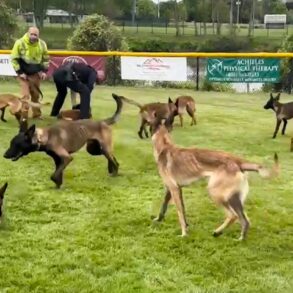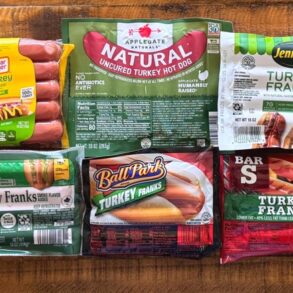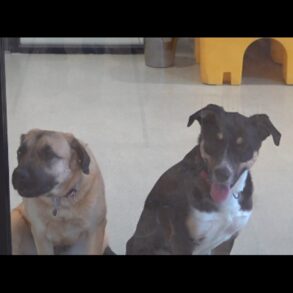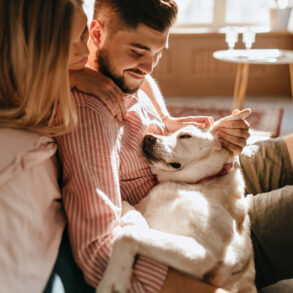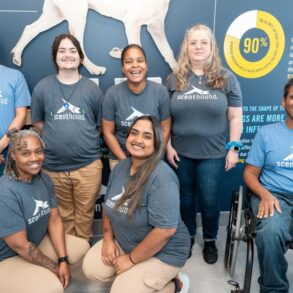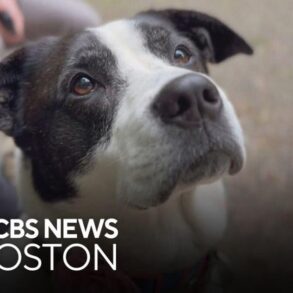There’s a saying about no two snowflakes being alike. I say no two dogs are alike either. Even if you were to clone a Labrador, raise them in the same environment, with the same food, toys, and care, you may still end up with one dog who loves to snuggle on the couch and one who would rather spend all day outside.
That’s the beauty of genetics. Just like humans, dogs come blessed with their own little personalities. Likes, dislikes, and preferences.
This means that you can’t really take a cookie-cutter approach to training and rewarding dogs. Just like some women like flowers and others prefer a box of chocolates, your dog has his own preferences and desires.
Dogs, like us, speak different “love languages.” The trick is finding out which love language or languages your dog prefers and how to satisfy them each day.
Related: 12 Things Humans Do That Annoy Dogs
The Different Types of Love Languages in Dogs
The topic of love languages in dogs is adopted from the work of Gary Chapman, an American author, radio talk show host, and Baptist minister who wrote The 5 Love Languages: The Secret to Love that Lasts.
Of course, this philosophy couldn’t go to the dogs and not get a makeover. Here are the different types of love languages in dogs.
1. Physical Touch
Some dogs are just like tactile junkies. They lean, nuzzle, stay glued to your feet, or sleep curled up in your lap like a little cinnamon roll.
These dogs are like those friends who like to hug, high-five, and touch your arm a dozen times during a conversation.
If your dog:
Advertisement
Advertisement
-
Uses your foot like a pillow
-
Leans into you
-
Pleads to be petted
… you likely own a tactile junkie who perceives physical touch as reinforcing.
How to Satisfy Them
Cuddle with your dog or give body massages after walks. If your dog melts under your touch, you know you’ve got the right spot.
As much as your dog loves this type of interaction, it’s important to respect consent. Every now and then, stop petting your dog and see what happens. Does your dog lean in for more? Then he wants you to continue. Does he move away or appear uninterested? Then he’s good for now.
Please consider that just because your dog craves physical touch, it doesn’t mean he wants it all the time or desires it from strangers. Always be aware of your dog’s body language.
2. Words of Affirmation
Yes, studies have shown that dogs are capable of distinguishing between words. That’s why they tilt their heads when they hear a familiar sound.
Say the word “cookie” in a sentence and your dog will likely tilt his head. Similarly, dogs can learn the meaning of actionable behaviors, such as sit, lie down, and come, and praise words, such as “good boy.”
If your dog’s tail shifts into high gear the moment he hears you say, “Who’s a good booooy?” you know you have a dog who loves vocal praise, but don’t think of him as an oddball.
Recent research has found that some dogs value social praise more than food rewards, which may explain the apparent efficacy of social interaction in dog training.
These are the dogs who:
Advertisement
Advertisement
-
React enthusiastically when you talk to them
-
Strut when praised mid-walk
-
Appear crushed when you use the wrong tone (even if the words are nice!)
How to Satisfy Them
Talk to your dog. Praise him every time you notice him making a brilliant decision, no matter how small (“You chose to poop on the grass rather than the rug? What a good boooy!”). He won’t understand the whole sentence, but your tone sets the tone, and he’ll wag at the “good boy” part.
Use your happy voice when making eye contact. For these dogs, your voice may work better than chicken.
3. Acts of Service
These dogs thrive when they are given a “job.” They are eager to do things that serve a utilitarian role. Sometimes, pet parents may find these behaviors frustrating and may try to suppress them through punishment.
These are the dogs who:
-
Patrol the house and take pride in sending intruders away
-
Manifest protective instincts when they sense a threat
-
Like to pick up things you drop and bring them to you
-
Thrive when given something to do
How to Satisfy Them
Keep track of what your dog likes to do. Don’t be quick to judge his behaviors and categorize them as “annoying.” Research your dog’s breed. There’s a chance that your dog was selectively bred to carry out specific tasks.
Provide your dog with a “job” that satisfies his needs (e.g., play fetch with your dog, let him bark up to three times to announce the mailman and then praise him and redirect to another activity, enroll him in herding trials, etc.). Train him to carry out little jobs that make his life more meaningful.
Many dogs greatly value time with their “people.”
4. Quality Time
Forget the treats and toys, as these dogs ultimately want you. Not your distracted phone-checking on walks, but your actual undivided presence. They value shared experiences over stuff. They’d rather sit with you in silence than chase a ball alone.
These are the dogs who:
Advertisement
Advertisement
-
Get saddened when left behind, even if briefly
-
Prefer a walk with you over a yard full of toys
How to Satisfy Them
Enjoy quality time. Take your dog on sniff walks, watch the sunset on the porch together and take them on car rides. Be present. Your full attention is ultimately the best gift of all. However, it’s important to keep an eye on signs of separation distress and address them accordingly.
5. Receiving Gifts
Some dogs light up like Christmas trees when you bring something over to them, whether it’s a squeaky squirrel, a new ball, or a bully stick.
These are the dogs who:
-
Romp around happily with their toys as if they were trophies
-
Hide their chews in secret places (under your couch pillows, maybe?)
-
Perk up and run towards you at the crinkle of a treat bag
How to Satisfy Them
Rotate toys to prevent boredom, offer novelties, and use food as enrichment in the form of treasure hunts, scent work, puzzle games, and more. Try new chews or let them choose something at the pet store.

Can Dogs Have More Than One Love Language?
Of course! Dogs, like people, can have more than one love language. Your dog might lean on you like the Tower of Pisa (physical touch), light up at your words of praise (words of affirmation), and still want their morning routine of a peanut butter Kong followed by their walk (gifts and quality time).
Knowing your dog’s top love language can help improve your relationship with your dog, but by honoring all five, at least occasionally, you can keep the connection rich.
Up Next:
Related: The Mystery of Why Your Dog’s Behavior Gets Worse Before It Gets Better
References
-
Who’s a Good Dog?: And How to Be a Better Human by Jessica Pierce
-
The Five Love Languages: How to Express Heartfelt Commitment to Your Mate by Gary Chapman
This post was originally published on this site be sure to check out more of their content.






